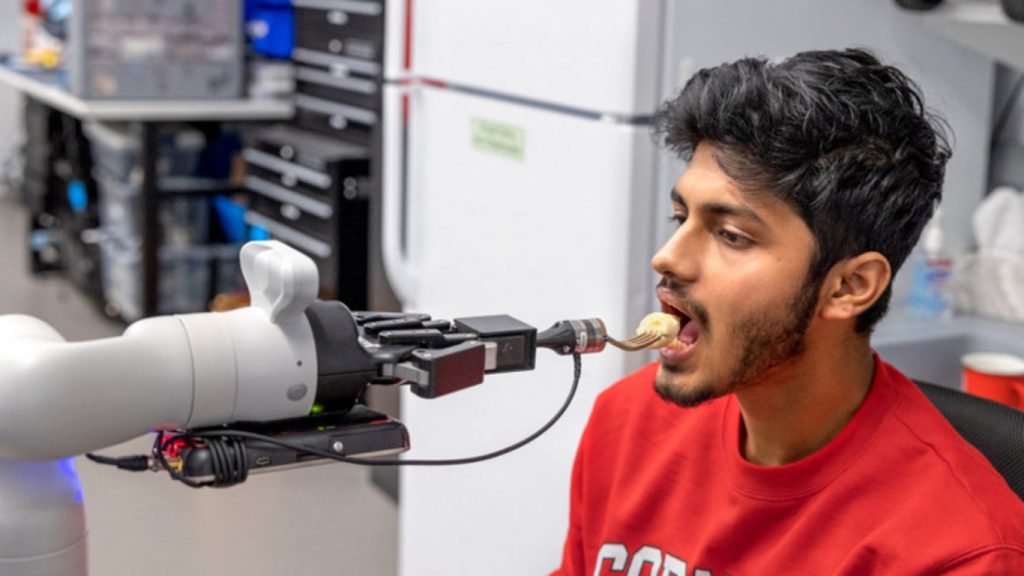Robots have taken over every industry. Now, they are being considered as caregivers for the future for aged people and for the ones who are differently-abled.
A Cornell University scientist Tapomayukh Bhattacharjee is developing a robotic arm to help feed people with spinal injuries, a press statement explains.
Bhattacharjee is an assistant professor of computer science at Cornell. He believes that robots have the potential to transform caregiving and that eating is a major area where they could provide a helping robotic hand.
He has just received a four-year, $1.5 million grant from the National Science Foundation’s National Robotics Initiative to help him and his EmPRISE Lab develop caregiving robotics solutions for people with physical disabilities.
“Feeding is one of the most basic activities,” Bhattacharjee said. “Imagine yourself asking someone else to feed you every morsel of food in your day-to-day life. It just completely takes away the sense of independence.”
“And so, if we could solve this feeding challenge,” he continued, “if a person could perceive this robot as an extension of their own body, then they will feel much more independent. That’s why I am so passionate about solving this.”
In his grant proposal, Bhattacharjee admitted that “despite great strides” taken in recent years, “robots are far from ready for adoption in real-home environments as long-term caregiving solutions.”
His team is working on multiple algorithms in the robotic arm, which, over time, will be able to learn the user’s preferences, making it easier for the machine to do its job.
“If we really want a long-term caregiving solution, the solution needs to be personalized to the user,” Bhattacharjee said “And just like a patient and a caregiver need time to get used to each other, it’s the same with a patient and a robot.”
The work of Bhattacharjee and others comes under the same category as the new soft robotics developments that allow manipulators to pick up sensitive objects. For example, in 2019, scientists at Harvard University developed a robotic hand so soft that it could handle a jellyfish underwater without causing it any harm.
WHO states that between 2015 and 2050, the proportion of the world’s population that is over 60 years of age is likely to almost double from 12 percent to 22 percent. This means that the caregiving industry could use a robotic helping hand.

